News
Tesla rolls out latest Safety Score update—Here’s what’s new
Tesla’s latest Safety Score update drops one highly criticized factor, while adding weight to pieces like speeding, follow distance, and more.
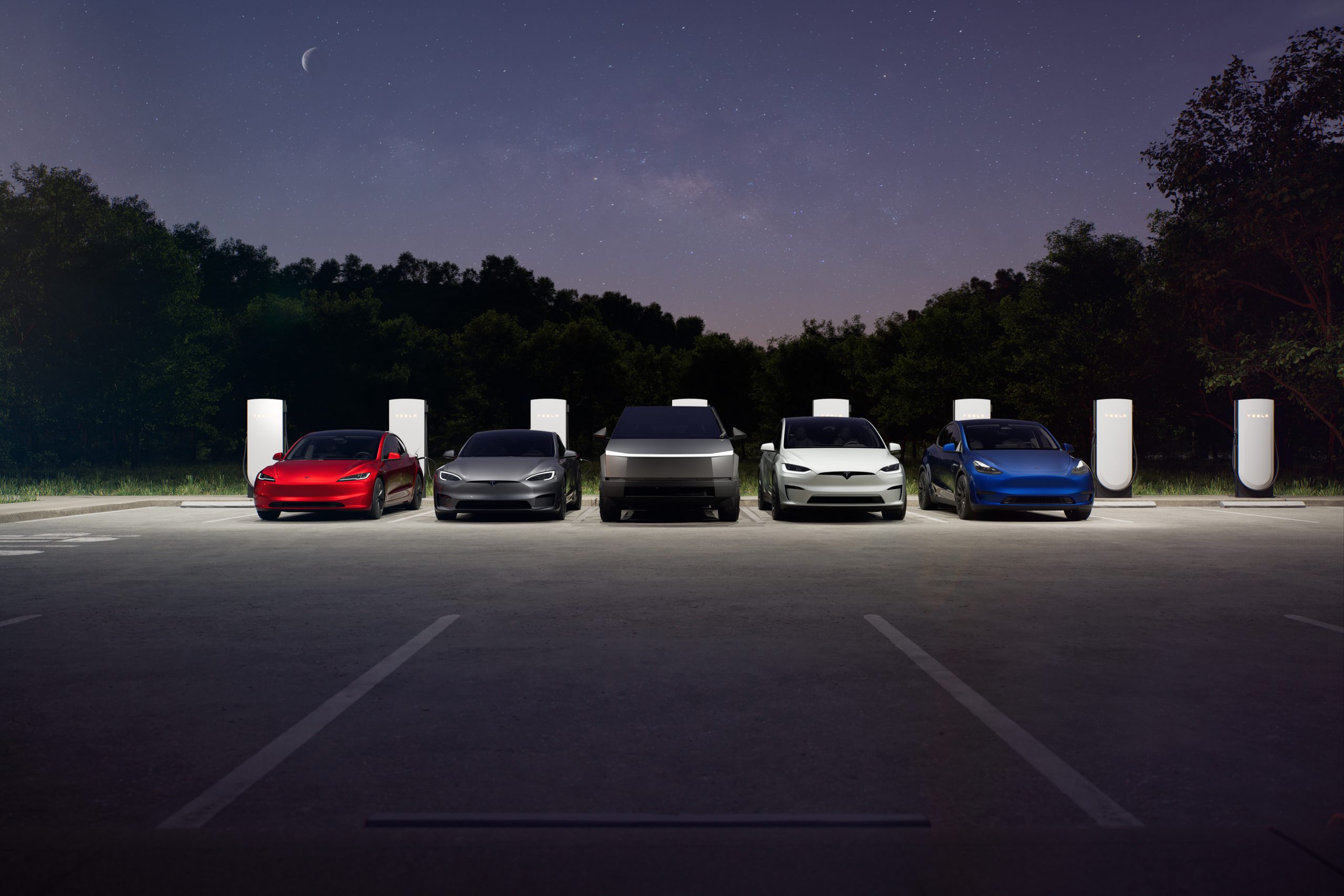
Tesla has officially started rolling out a new version of its insurance program’s Safety Scores beta, improving upon a few different metrics that make up the index.
As detailed on the Tesla Insurance web page, the company has updated its Safety Scores to beta version 2.2 from the previous version 2.1. The update primarily includes improvements to how Excessive Speeding is measured, along with the removal of Forward Collision Warnings (FCW) from the formula.
In addition, Tesla has slightly increased the values of related factors such as Hard Braking and Unsafe Following Time in the v2.2 formula, perhaps in an attempt to help accommodate some of the situations previously covered by the FCW rating.
READ MORE ON TESLA INSURANCE: Tesla launches insurance discount for FSD users in these two states
Tesla’s Safety Scores are used to determine premium rates for buyers of the company’s in-house insurance program, except in California, where privacy laws prohibit the use of real-time driving data to determine premiums. The company also says that its latest formula for Safety Scores were generated using over 22 billion miles of fleet data from its cars, while the company plans to continue improving the formula as more data comes in.
At this time, Tesla Insurance is available in the following 12 states, though Safety Scores aren’t available in California for the aforementioned reason:
- Arizona
- California
- Colorado
- Illinois
- Maryland
- Minnesota
- Nevada
- Ohio
- Oregon
- Texas
- Utah
- Virginia
You can see the factors that make up Tesla’s Insurance Safety Scores below or on its website here, along with the specific formula that makes up a drivers’ 0 to 100 Safety Score.
Hard Braking
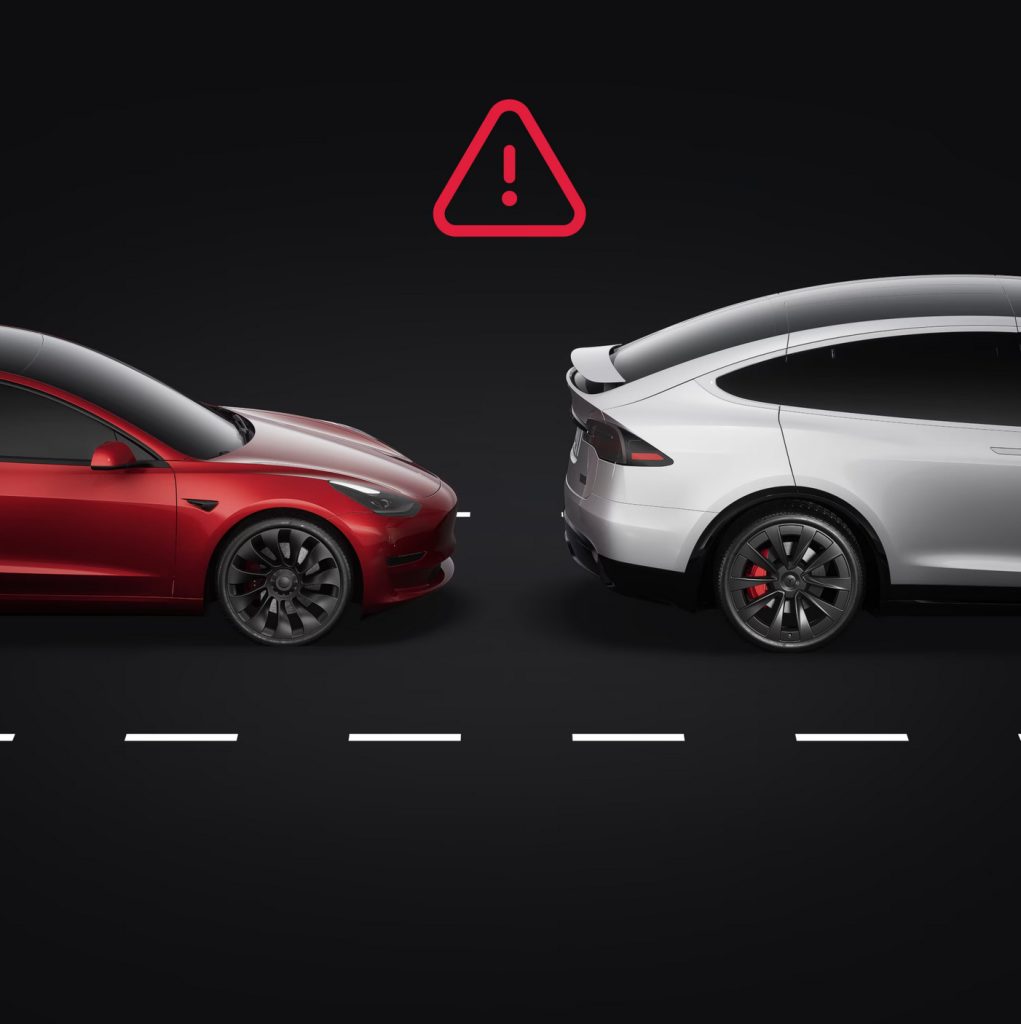
Credit: Tesla
Hard braking is defined as backward acceleration, measured by your Tesla vehicle, in excess of 0.3g. This is the same as a decrease in the vehicle’s speed larger than 6.7 mph, in one second. Hard braking is introduced into the Safety Score Beta formula as the proportion of time where the vehicle experiences backward acceleration greater than 0.3g as a percentage of the proportion of time the vehicle experiences backward acceleration greater than 0.1g (2.2 mph in one second). Hard braking while on Autopilot is not factored into the Safety Score Beta formula. For vehicles with Autopilot computer 3.0 or greater, braking while the vehicle detects yellow traffic lights is also not factored into the Safety Score Beta formula. If the vehicle is unable to detect a yellow traffic light at the time of the hard braking, the event will impact your Safety Score. The percentage shown in the app is the proportion of time spent braking done with excessive force when driving and Autopilot is not engaged. The value is capped at 5.2 percent in the Safety Score Beta formula.
Aggressive Turning
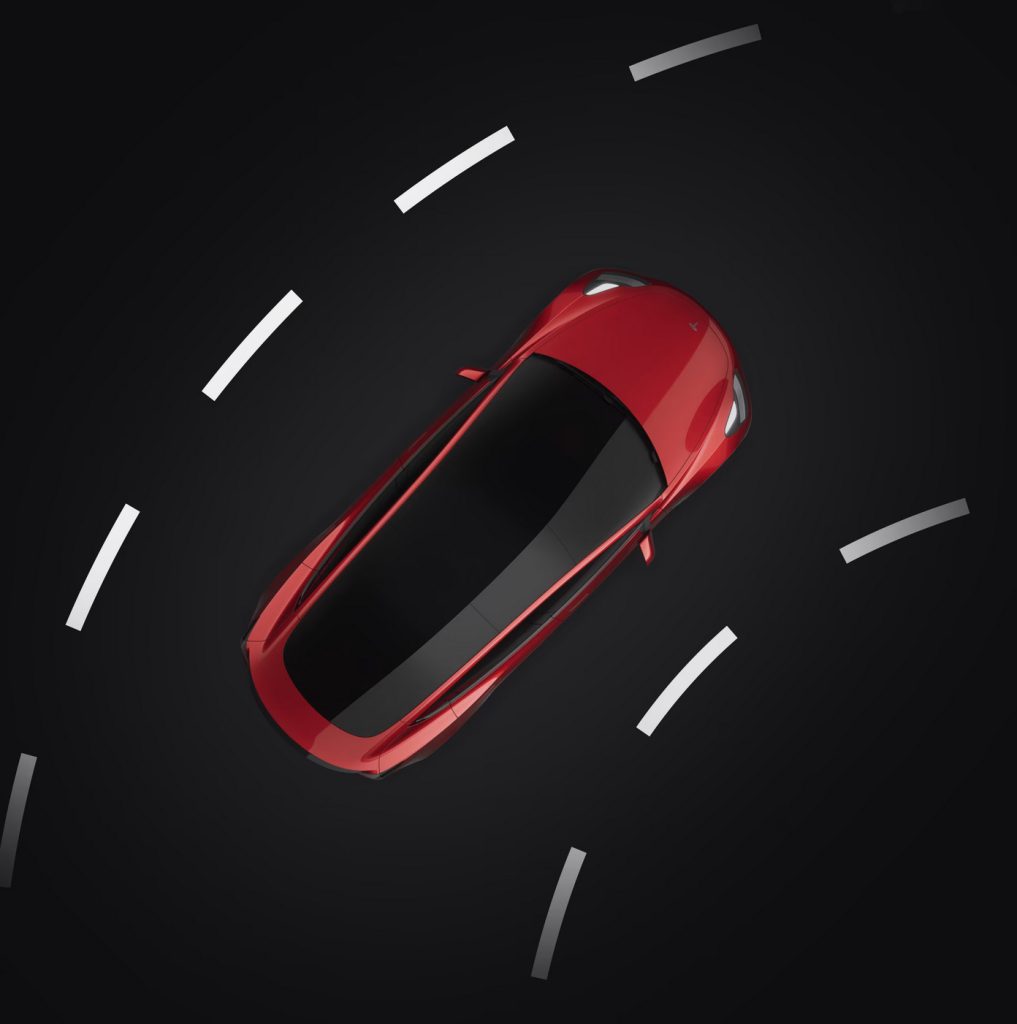
Credit: Tesla
Aggressive turning is defined as left/right acceleration, measured by your Tesla vehicle, in excess of 0.4g. This is the same as an increase in the vehicle’s speed to the left/right larger than 8.9 mph, in one second. Aggressive turning is introduced into the Safety Score Beta formula as the proportion of time the vehicle experiences left or right acceleration greater than 0.4g as a percentage of the proportion of time the vehicle experiences left or right acceleration greater than 0.2g (4.5 mph in one second). Aggressive turning while on Autopilot is not factored into the Safety Score Beta formula. The percentage shown in the Tesla app is the proportion of time spent turning with excessive force when driving and Autopilot is not engaged. The value is capped at 13.2 percent in the Safety Score Beta formula.
Unsafe Following
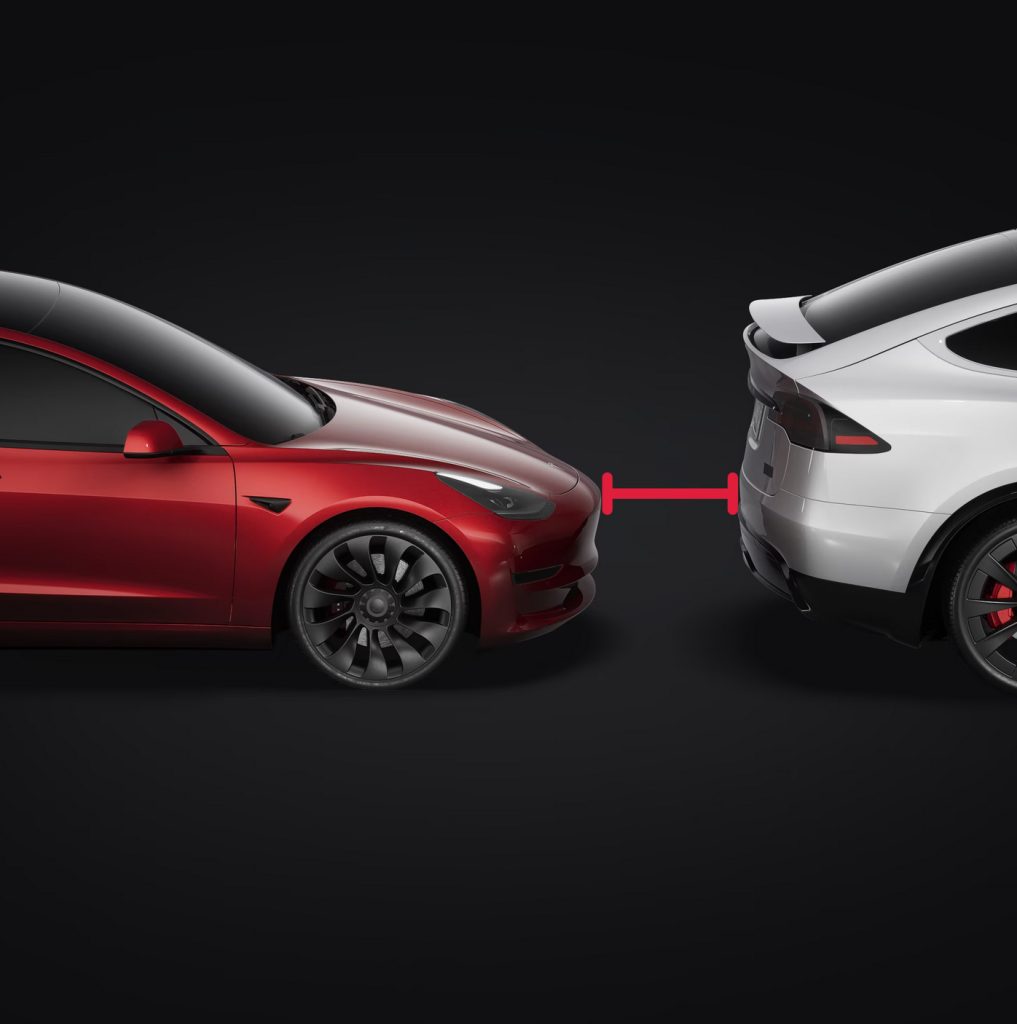
Credit: Tesla
Your Tesla vehicle measures its own speed, the speed of the vehicle in front and the distance between the two vehicles. Based on these measurements, your vehicle calculates the number of seconds you would have to react and stop if the vehicle in front of you came to a sudden stop. This measurement is called “headway.” Unsafe following is the proportion of time where your vehicle’s headway is less than 1.0 seconds relative to the time that your vehicle’s headway is less than 3.0 seconds. Unsafe following is only measured when your vehicle is traveling at least 50 mph and is incorporated into the Safety Score Beta formula as a percentage. Unsafe following while on Autopilot is not factored into the Safety Score Beta formula. The percentage shown in the Tesla app is the percentage of unsafe following when driving and Autopilot is not engaged. The value is capped at 63.2 percent in the Safety Score Beta formula.
Excessive Speeding
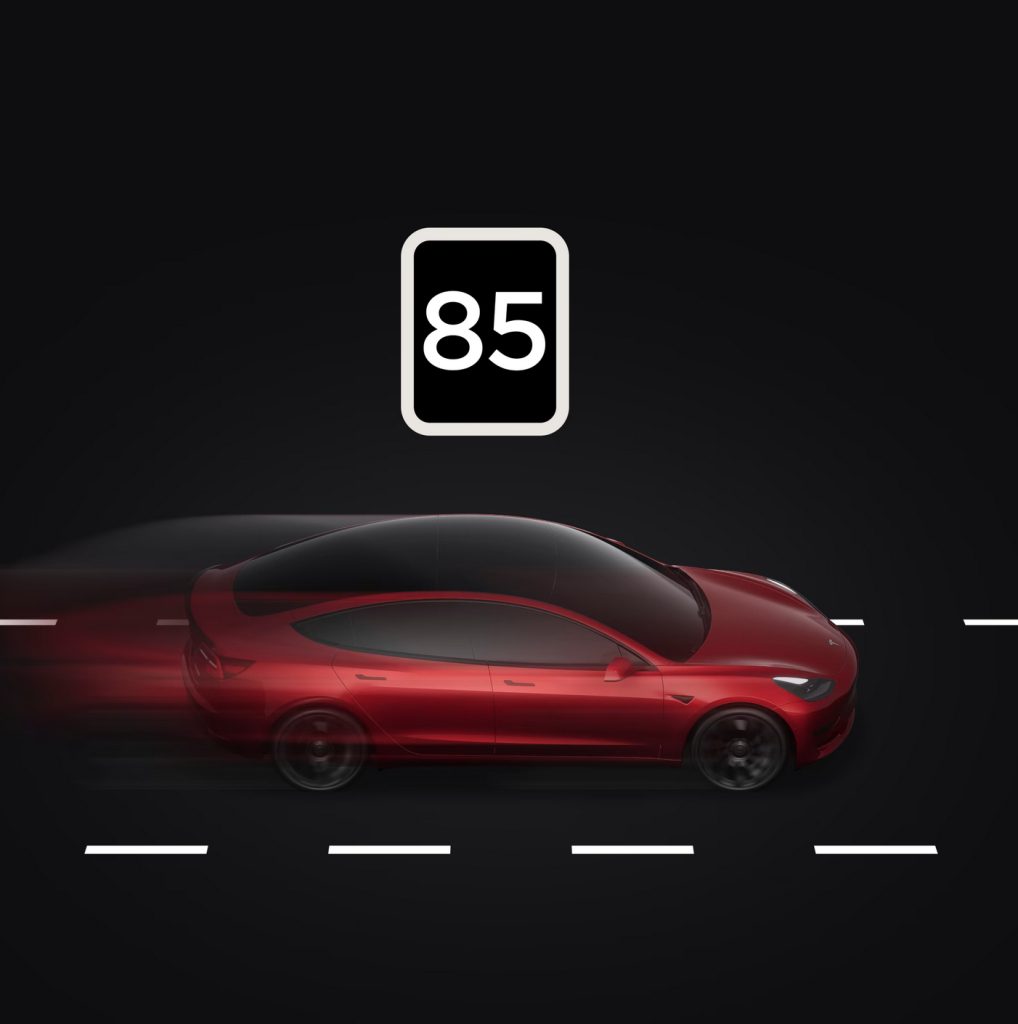
Credit: Tesla
Excessive Speeding is defined as the proportion of time spent driving in excess of 85 mph or driving 20% faster than the vehicle in front of you, when that vehicle is going over 25 mph and is within 100 meters of your vehicle. This value is expressed as a percentage of total driving time and is capped at 10.0% in the Safety Score Beta formula. Speeding while on Autopilot is not factored into the Safety Score Beta formula.
Late-Night Driving
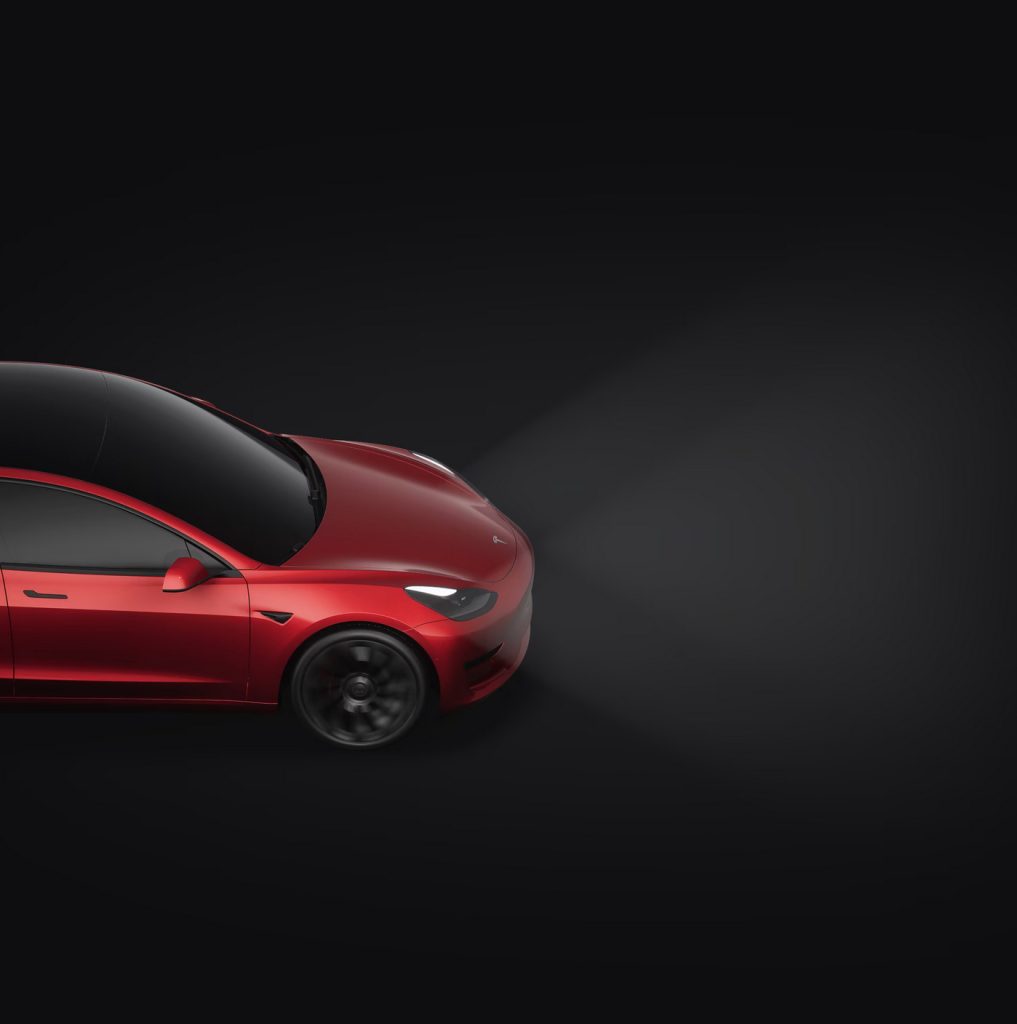
Credit: Tesla
Late-Night Driving is defined as the number of seconds you spend driving at night (11 PM – 4 AM) divided by the number of seconds you spend driving total during the day and night. Due to the variable risk level associated with driving during each late-night hour, each hour is weighed differently, and driving at each hour will affect your Safety Score differently. For example, driving at 11 PM will not affect your Safety Score as heavily as driving at 2 AM. Drive sessions that span two days will apply to the day the trip ends. Late-Night Driving includes all driving at night (11 PM – 4 AM) including any driving done on Autopilot. The value is capped at 14.2 percent in the Safety Score Beta formula.
Forced Autopilot Disengagement
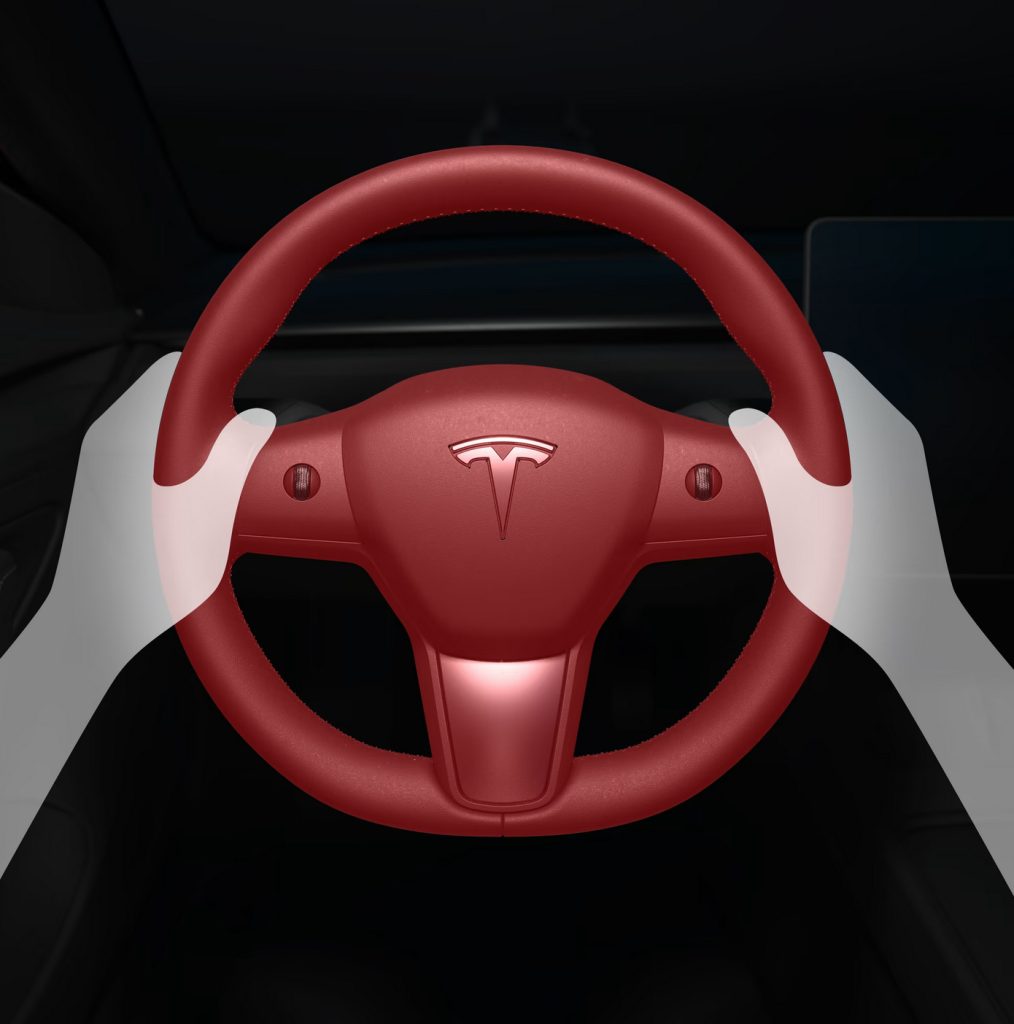
Credit: Tesla
The Autopilot system disengages for the remainder of a trip after the driver has received three audio and visual warnings. These warnings occur when your Tesla vehicle has determined that the driver has not applied sufficient resistance to the steering wheel or has become inattentive. Forced Autopilot Disengagement is introduced into the Safety Score Beta formula as a 1 or 0 indicator. The value is 1 if the Autopilot system is forcibly disengaged during a trip, and 0 otherwise.
Unbuckled Driving
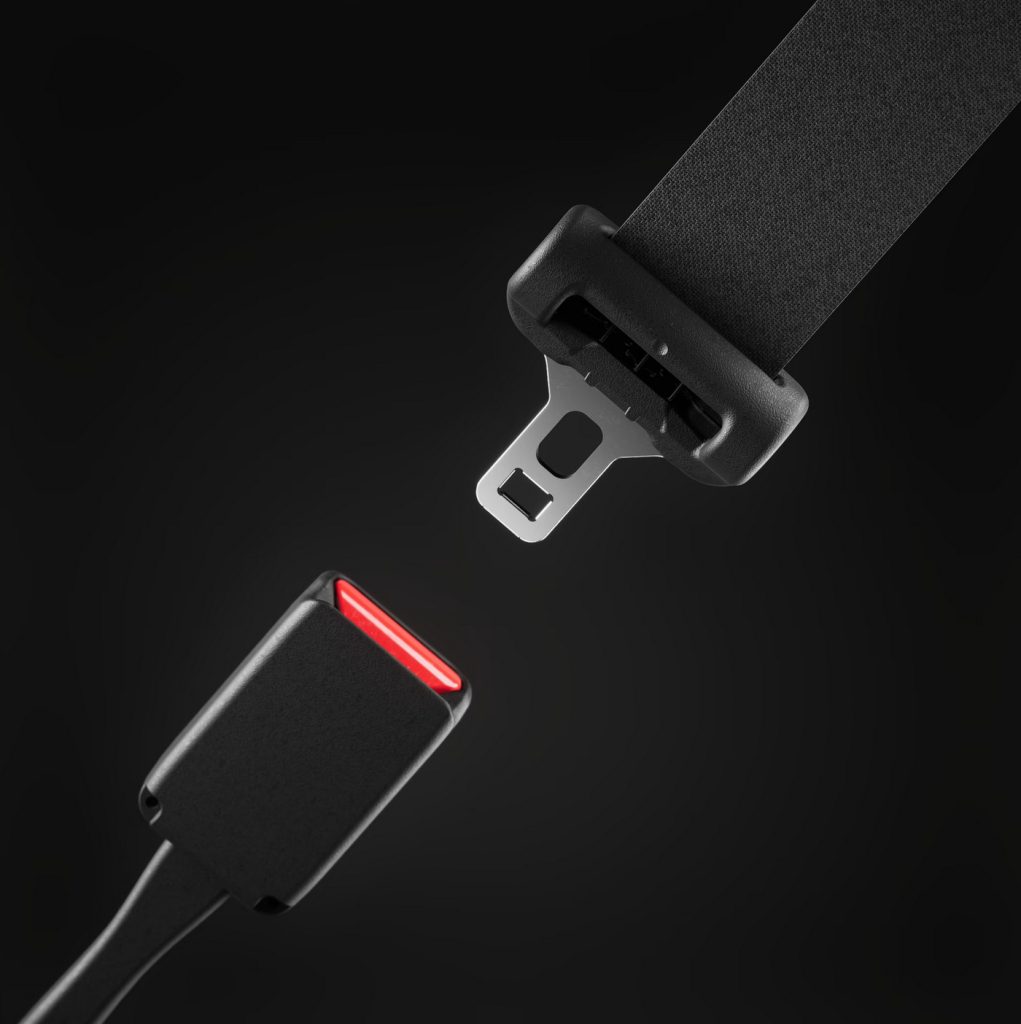
Credit: Tesla
Unbuckled Driving is defined as the proportion of time spent driving above 10 mph without fastening the driver’s seatbelt in a Tesla vehicle, as a percentage of time spent driving above 10 mph. The value shown in the Tesla app is the proportion of time driven at a speed over 10 mph, without buckling the driver’s seatbelt, as a percentage of time spent driving over 10 mph. The value is capped at 31.7 percent in the Safety Score Beta formula.
Tesla’s formula for Safety Score beta v2.2
Tesla takes the formula pictured below, dubbed its Predicted Collision Frequency (PCF), and converts it into the 0 to 100 version 2.2 Safety Score it assigns based on driver behavior. The 2.1 Safety Score formula can also be seen on the Tesla Insurance page, though the below formula is for the newly launched version 2.2.
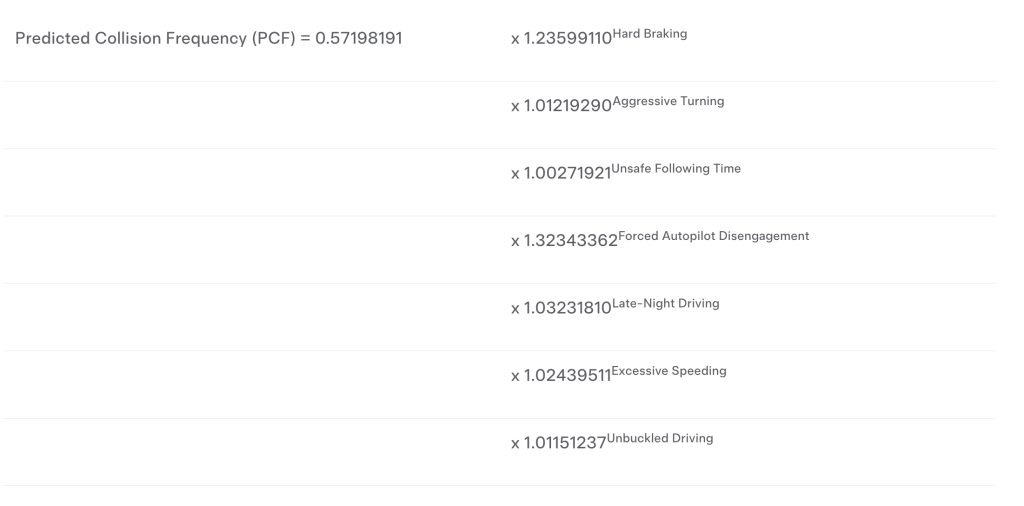
Credit: Tesla

News
Tesla dispels reports of ‘sales suspension’ in California
“This was a “consumer protection” order about the use of the term “Autopilot” in a case where not one single customer came forward to say there’s a problem.
Sales in California will continue uninterrupted.”

Tesla has dispelled reports that it is facing a thirty-day sales suspension in California after the state’s Department of Motor Vehicles (DMV) issued a penalty to the company after a judge ruled it “misled consumers about its driver-assistance technology.”
On Tuesday, Bloomberg reported that the California DMV was planning to adopt the penalty but decided to put it on ice for ninety days, giving Tesla an opportunity to “come into compliance.”
Tesla enters interesting situation with Full Self-Driving in California
Tesla responded to the report on Tuesday evening, after it came out, stating that this was a “consumer protection” order that was brought up over its use of the term “Autopilot.”
The company said “not one single customer came forward to say there’s a problem,” yet a judge and the DMV determined it was, so they want to apply the penalty if Tesla doesn’t oblige.
However, Tesla said that its sales operations in California “will continue uninterrupted.”
It confirmed this in an X post on Tuesday night:
This was a “consumer protection” order about the use of the term “Autopilot” in a case where not one single customer came forward to say there’s a problem.
Sales in California will continue uninterrupted.
— Tesla North America (@tesla_na) December 17, 2025
The report and the decision by the DMV and Judge involved sparked outrage from the Tesla community, who stated that it should do its best to get out of California.
One X post said California “didn’t deserve” what Tesla had done for it in terms of employment, engineering, and innovation.
Tesla has used Autopilot and Full Self-Driving for years, but it did add the term “(Supervised)” to the end of the FSD suite earlier this year, potentially aiming to protect itself from instances like this one.
This is the first primary dispute over the terminology of Full Self-Driving, but it has undergone some scrutiny at the federal level, as some government officials have claimed the suite has “deceptive” naming. Previous Transportation Secretary Pete Buttigieg was vocally critical of the use of the name “Full Self-Driving,” as well as “Autopilot.”
News
New EV tax credit rule could impact many EV buyers
We confirmed with a Tesla Sales Advisor that any current orders that have the $7,500 tax credit applied to them must be completed by December 31, meaning delivery must take place by that date. However, it is unclear at this point whether someone could still claim the credit when filing their tax returns for 2025 as long as the order reflects an order date before September 30.
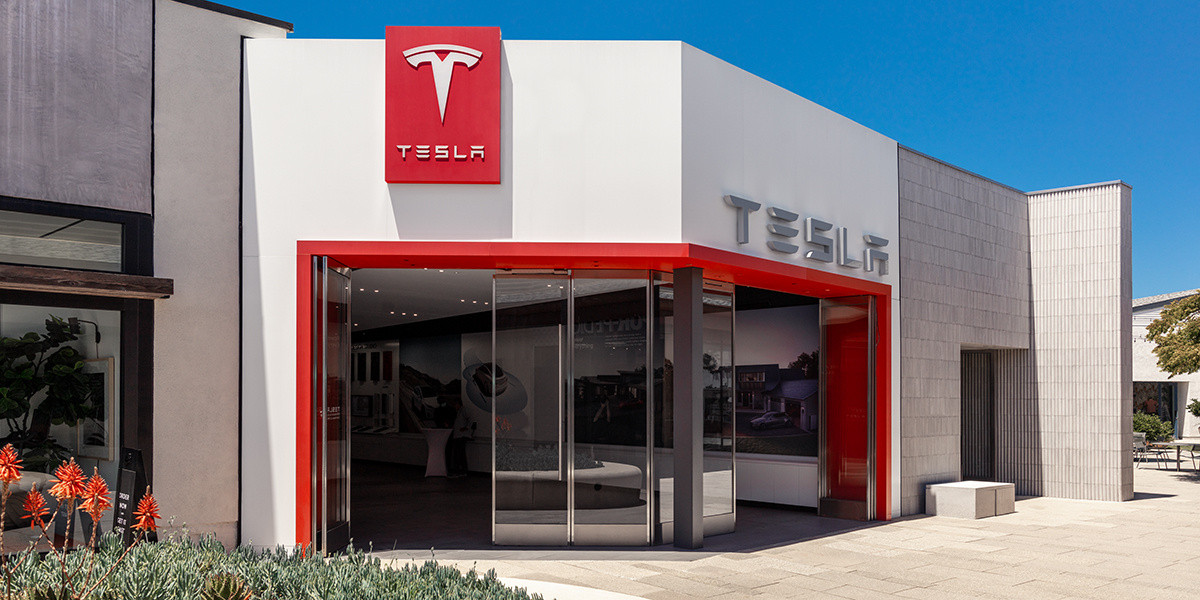
Tesla owners could be impacted by a new EV tax credit rule, which seems to be a new hoop to jump through for those who benefited from the “extension,” which allowed orderers to take delivery after the loss of the $7,500 discount.
After the Trump Administration initiated the phase-out of the $7,500 EV tax credit, many were happy to see the rules had been changed slightly, as deliveries could occur after the September 30 cutoff as long as orders were placed before the end of that month.
However, there appears to be a new threshold that EV buyers will have to go through, and it will impact their ability to get the credit, at least at the Point of Sale, for now.
Delivery must be completed by the end of the year, and buyers must take possession of the car by December 31, 2025, or they will lose the tax credit. The U.S. government will be closing the tax credit portal, which allows people to claim the credit at the Point of Sale.
🚨UPDATE: $7,500 Tax Credit Portal “Closes By End of Year”.
This is bad news for pending Tesla buyers (MYP) looking to lock in the $7,500 Tax Credit.
“it looks like the portal closes by end of the year so there be no way for us to guarantee the funds however, we will try our… pic.twitter.com/LnWiaXL30k
— DennisCW | wen my L (@DennisCW_) December 15, 2025
We confirmed with a Tesla Sales Advisor that any current orders that have the $7,500 tax credit applied to them must be completed by December 31, meaning delivery must take place by that date.
However, it is unclear at this point whether someone could still claim the credit when filing their tax returns for 2025 as long as the order reflects an order date before September 30.
If not, the order can still go through, but the buyer will not be able to claim the tax credit, meaning they will pay full price for the vehicle.
This puts some buyers in a strange limbo, especially if they placed an order for the Model Y Performance. Some deliveries have already taken place, and some are scheduled before the end of the month, but many others are not expecting deliveries until January.
Elon Musk
Elon Musk takes latest barb at Bill Gates over Tesla short position
Bill Gates placed a massive short bet against Tesla of ~1% of our total shares, which might have cost him over $10B by now
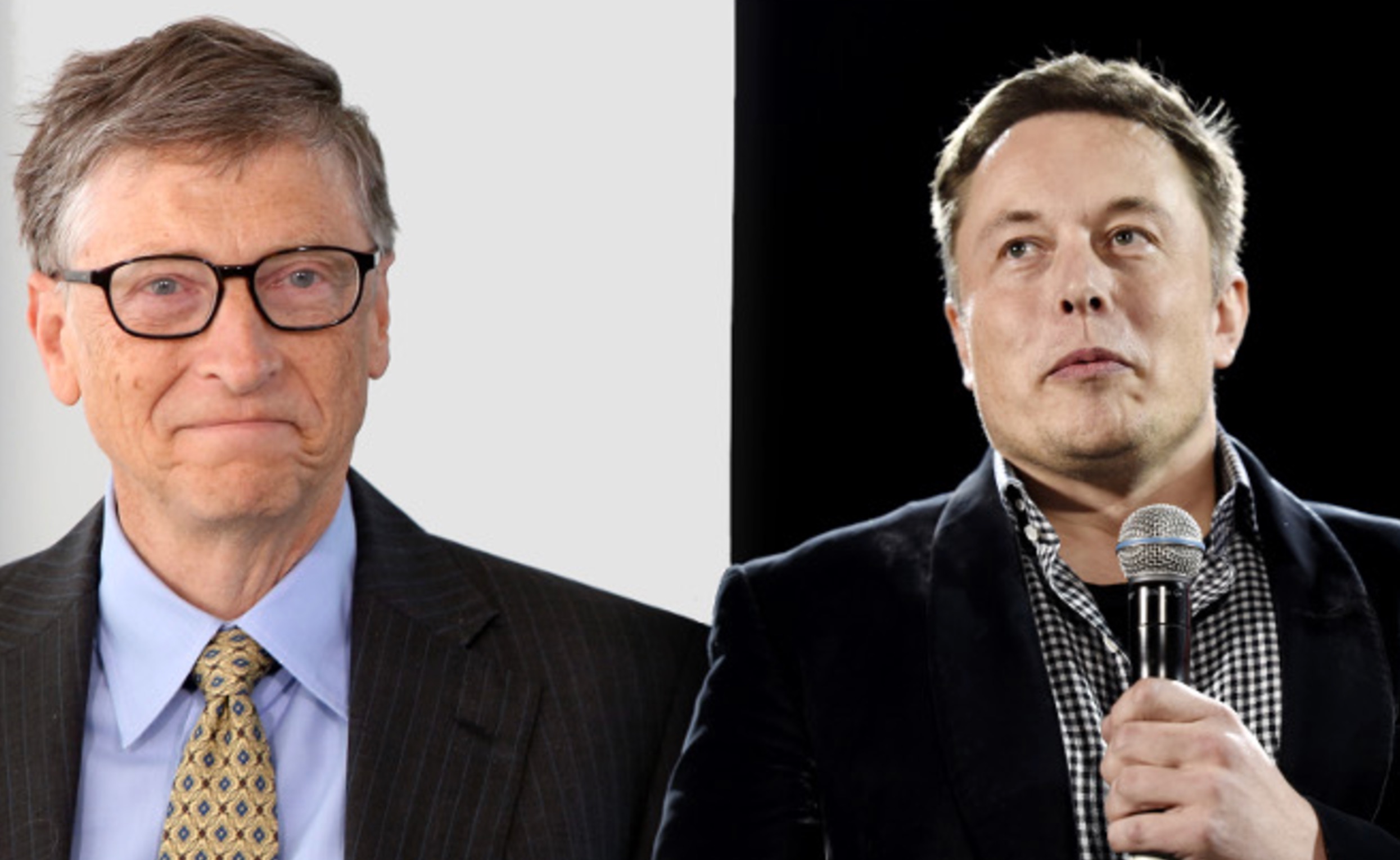
Elon Musk took his latest barb at former Microsoft CEO Bill Gates over his short position against the company, which the two have had some tensions over for a number of years.
Gates admitted to Musk several years ago through a text message that he still held a short position against his sustainable car and energy company. Ironically, Gates had contacted Musk to explore philanthropic opportunities.
Elon Musk explains Bill Gates beef: He ‘placed a massive bet on Tesla dying’
Musk said he could not take the request seriously, especially as Gates was hoping to make money on the downfall of the one company taking EVs seriously.
The Tesla frontman has continued to take shots at Gates over the years from time to time, but the latest comment came as Musk’s net worth swelled to over $600 billion. He became the first person ever to reach that threshold earlier this week, when Tesla shares increased due to Robotaxi testing without any occupants.
Musk refreshed everyone’s memory with the recent post, stating that if Gates still has his short position against Tesla, he would have lost over $10 billion by now:
Bill Gates placed a massive short bet against Tesla of ~1% of our total shares, which might have cost him over $10B by now
— Elon Musk (@elonmusk) December 17, 2025
Just a month ago, in mid-November, Musk issued his final warning to Gates over the short position, speculating whether the former Microsoft frontman had still held the bet against Tesla.
“If Gates hasn’t fully closed out the crazy short position he has held against Tesla for ~8 years, he had better do so soon,” Musk said. This came in response to The Gates Foundation dumping 65 percent of its Microsoft position.
Tesla CEO Elon Musk sends final warning to Bill Gates over short position
Musk’s involvement in the U.S. government also drew criticism from Gates, as he said that the reductions proposed by DOGE against U.S.A.I.D. were “stunning” and could cause “millions of additional deaths of kids.”
“Gates is a huge liar,” Musk responded.
It is not known whether Gates still holds his Tesla short position.








